#culloden moor
Text

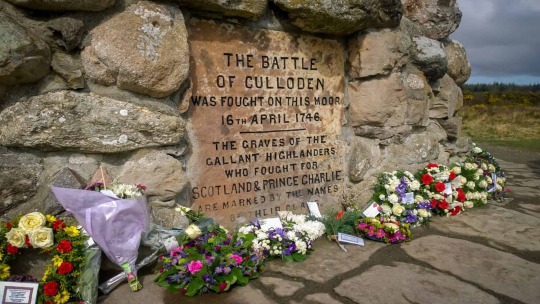
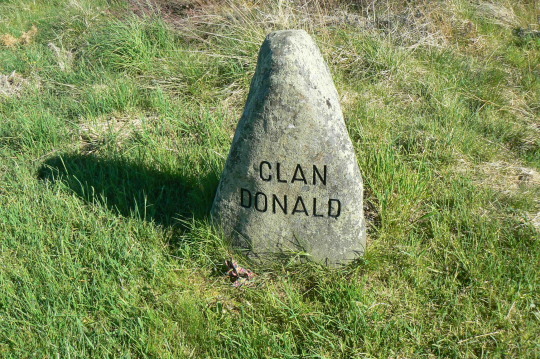


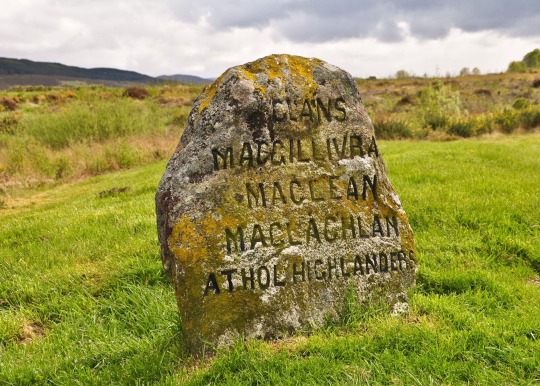

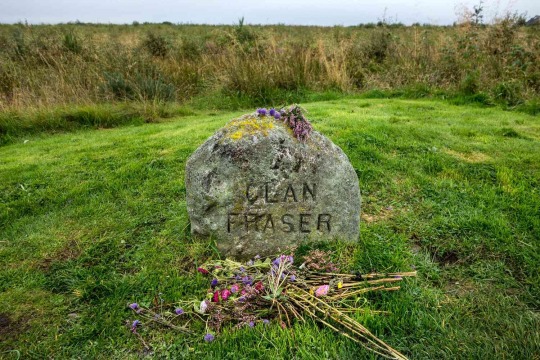
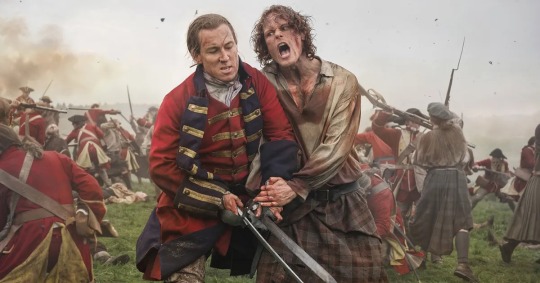

Remembering the brave men who fought today 278 years ago at the battle of Culloden Moor. I was always told our family was Clan Macintosh (not sure how true bc my surname is an English name but I messaged an expert who checked records and said perhaps we were married into it or were honoured into the clan, but my Great Great Grandfather immigrated from Scotland so who knows) and they were present at that battle so perhaps men from my family were there.
Ive always had a weird feeling about April 16, ever since I was a teenager. I didn’t know if it meant something good would happen, bad, or a significant event was going to take place that day. Then I started watching Outlander and found out about Culloden. It hit me so hard. I am starting to believe in past lives and perhaps I had a family member (son, husband, cousin, brother, father, friend) that was in the battle and died. I also have a weird connection with Gettysburg. Maybe I just keep losing loved ones in battles. 🤷🏻♀️
4 notes
·
View notes
Text
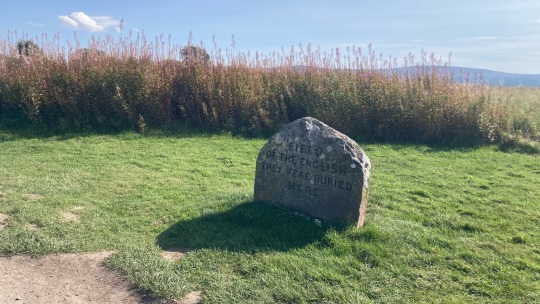

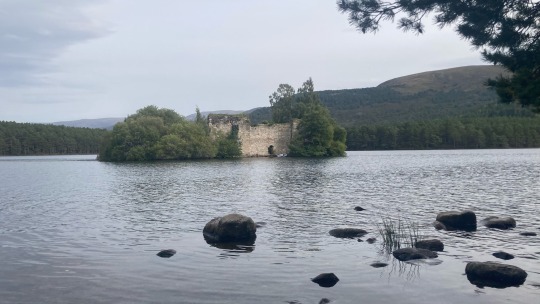

scotland, day six
#kay’s adventures#scotland trip#outlander trip#exploring#travel#travelling#culloden#culloden moor#culloden battlefield#tomatin#whisky tasting#distillery tour#whisky casks#standing stones
7 notes
·
View notes
Text
Heritage breed cattle make quick work of the battlefield’s invasive plant species.
Looking at Culloden’s pack of 19 furry heritage breed cattle, you might not think it, but the cows make ideal landscapers for sensitive terrain.
Culloden is as much a historic battleground as a cemetery. “Over 1,000 people are buried here,” Walker says, and that makes the work of restoring the sacred ground extremely delicate.
Deploy heavy machinery and you could upset the final resting place of hundreds of soldiers.
Highland and Shetland cattle, on the other hand, are small and agile and can consume 155 pounds of plant matter a day. “They eat everything from the fast-growing birch to the prickly gorse,” Walker says, which has been key to the bog’s restoration.
3 notes
·
View notes
Photo

There's a hare in your eye: Freck Fraser said they were "lucky" to have this leveret’s mother use their garden as a creche this past week in Culloden Moor.
22 notes
·
View notes
Photo
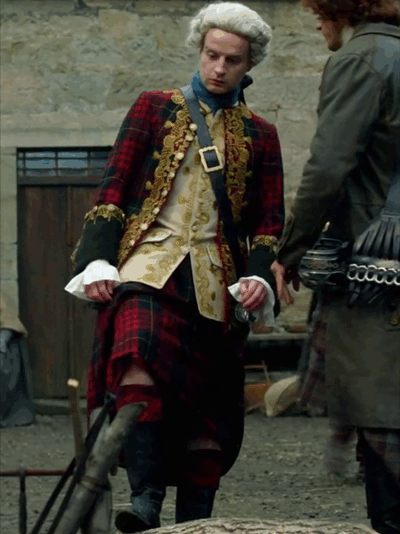
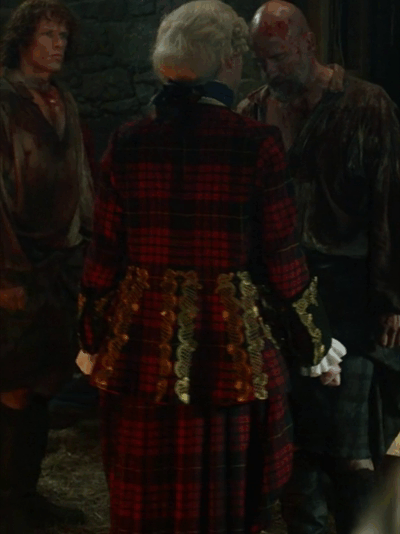


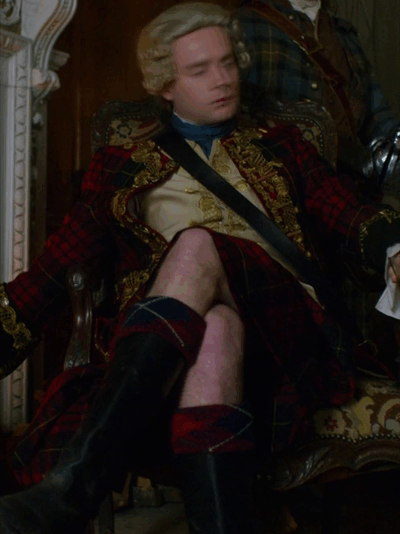
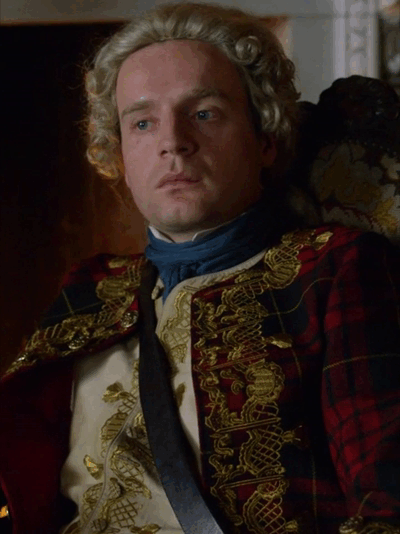


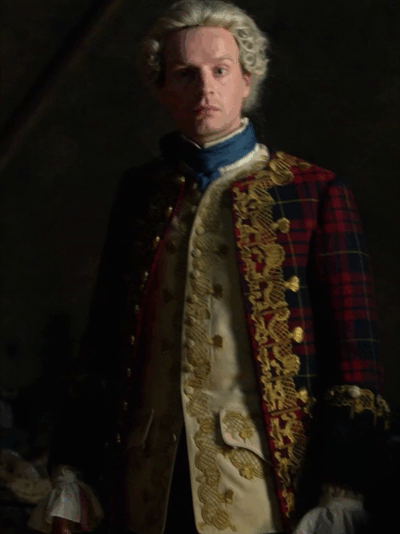
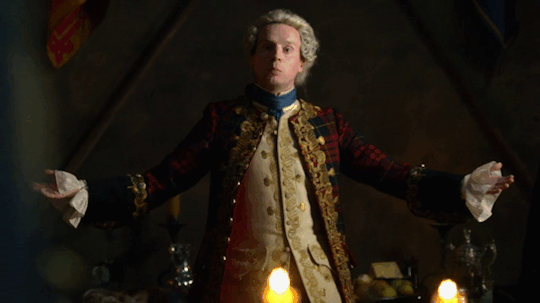
Outlander + Costumes
Charles Edward Stuart’s red, black & golden frock and kilt, creme & golden vest, white shirt and blue necktie in Season 02, Episode 10, 12 & 13 and Season 03, Episode 01.
// requested by anonymous
#Outlander#Charles Edward Stuart#Bonnie Prince Charlie#period drama#perioddramaedit#costume drama#costumes#costumesource#1700s#18th century#red#black#gold#creme#white#blue#Prestonpans#East Lothian#Drummossie Moor#Culloden#Inverness#Scottish Highlands#Scotland#Britain#Europe#requests#Men
63 notes
·
View notes
Text
CARRUTHERS AND THE JACOBITE REBELLION - CLAN CARRUTHERS CCIS
CARRUTHERS AND THE JACOBITE REBELLION 1745 – 1746
The Rebellion
The 1715 and 1745 insurrections were certainly not an attempt to put Prince Charles Edward Stewart on the throne of the United Kingdom of Scotland, England and (at that time)Ireland. His father styled James VIII of Scotland and III of England was still alive. Charles Edward Stewart was fighting for his father throne, although…
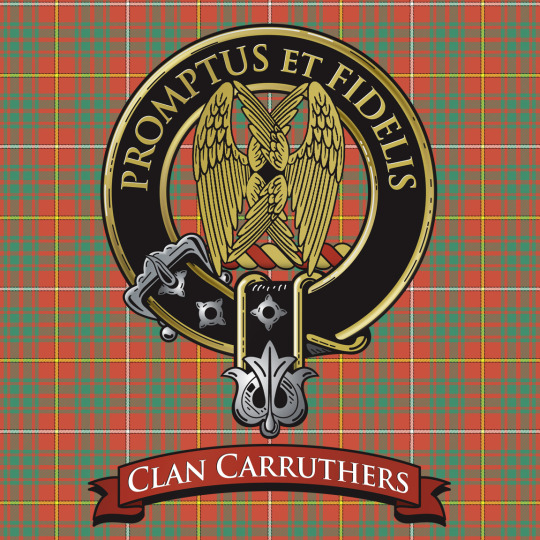
View On WordPress
#Carruthers#Carruthers Clan#Carruthers history#Carruthers in the Military#Clan Carruthers#cullodeen#CULLODEN#JACOBITES#moor#prince charles edward stewart#REBELLION
0 notes
Text
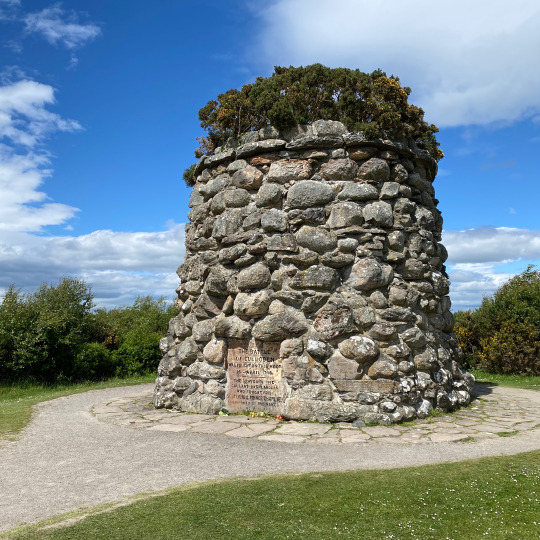

April 16th 1746 saw the Battle of Culloden.
Much has been said about the site of the battle and the Prince has been criticised for “choosing” the moor.
Three sites were scouted in the 48 hours leading up to the battle, they knew Cumberland’s army was coming, their had been skirmishes in the week or so before this day, things were coming to a head.
The first site as at Dalcross Castle, which John Sullivan, the Irish adjutant and quartermaster general, rejected, because the distance across the ravine would have been too small to protect the Jacobite army from British musket fire from the other side.
The second was on the south side of the Nairn, chosen by Lord George Murray. This was poor ground, did not protect the road to Inverness and was vulnerable to British mortar fire from the other side of the river. It is clear that this site was a prelude to retreat and the dissolution of the army, because it was not an effective battle site.
The third site was about 1km east of where the battle was eventually fought, and John Sullivan drew up the army there on 15 April. It was on higher and less boggy ground than the final battlefield, and both wings of the army could see each other, which they could not in the next day’s sleet and rain. No one ‘chose’ the site of the battle on Drummossie Moor as a preference: it was the line closest to headquarters at Culloden House which could defend the road to Inverness.
Many of those soldiers who were asleep after the failed night attack on the 15th had retreated to the grounds of Culloden House, and there was little time to form them up as the British Army approached on the morning of the battle.
Some had urged the Prince to fall back into the hills and glens, split into units and launch a guerrilla campaign, historians can’t agree who ruled this out, some say Lord Murray, others Prince Charles, some a mixture of the two, no matter what it never happened, as we all know.
The battle began around before mid-day, the 9,000 well-rested Government troops advanced downwind across the Moor towards their exhausted opponents who faced directly into the north-east wind and its accompanying sleet. The Prince’s forces numbered about 6,000 and were in two lines. The left flank of the front line was held by the three regiments of MacDonalds, highly resentful that they were not in their traditional place of honour on the right, held by the Atholl Brigade.
In the centre were some of the best of the Jacobite infantry, veterans of the victories at Prestonpans and Falkirk: Lord Lovat’s Frasers, the MacLeans, Mackintoshes, McLachlans and Chisholms. Weak in artillery, the Jacobite frontline could see Cumberland’s gunners unlimbering and loading their batteries of cannon. Receiving no order to unleash the fearsome Highland charge, by far their best weapon, they must have known what was coming.
And come it did; Cumberland opened fire with roundshot across the unobstructed moorland. Behind his artillery, the Duke’s own front line consisted of six regular infantry battalions; the Royal Regiment on the right, opposite the MacDonalds, with Barrell’s Regiment on the left, facing the Athollmen. The second line contained six more infantry battalions, with yet three more in a third line alongside two squadrons of light cavalry. Out on his flanks were the feared heavy Dragoons: Cobham’s on the right, Kerr’s on the left. All was ready for the Jacobite charge.
Cumberland’s infantry had been given intensive training on how to deal with the onrushing Highlander, claymore in right hand, targe on his left. Having fired his Brown Bess musket, each man was to use his socketed bayonet to attack the opponent on his right front, trusting that his own comrade to his immediate left would do the same.
This was designed to avoid the parrying effect of the targe and inflict a disabling wound in the first shock of contact.
For a full half-hour the Government artillery thundered on unchallenged, roundshot and then grapeshot hammering into the Prince’s waiting battalions. Still no order to charge came as scores of men went down, thinning the ranks and producing frantic calls from officers and men to be released to the charge. Eventually they went off anyway.
The MacDonalds crashed in to Barrell’s Regiment, overrunning the front line before losing momentum and being shot and bayoneted by the upcoming second rank. Elsewhere the charge was even less successful; depleted by cannon fire and decimated by the rolling volleys of the infantry, Highland courage and dash proved no match for regular infantry discipline. The charge reeled backwards leaving up to a thousand dead in front of and among the Government positions.
Cumberland ordered a general advance and unleashed his cavalry. What had been a battle was now a rout. It had lasted an hour.
Jacobite casualties are estimated at 1,500 dead, with an unknown number of wounded and fugitives bayoneted and shot in the merciless pursuit that followed.Cumberland lost only 59 dead and 250 wounded, the only senior officer to die being Lord Robert Kerr, commander of grenadiers in Barrell’s Regiment and a son of the Marquess of Lothian.
It was over; the military neutralisation of the Highlands was about to begin.
The ease in which the Government troops surprised Cumberland, and he surprised further when the Jacobites did not regroup and force another battle, he certainly expected another, but none came, around 1000 gathered the following day at Ruthven Barracks, where a written order from Prince Charles told them to “seek their own safety” and disband. But, for many, surrendering was too dangerous an option.
As time went on, the risks of Jacobites handing themselves in became clear. The mood of the Ruthven meetings was downcast. Many fought on to avoid capture or because the risk of surrendering was high. In June, a number of Jacobites went into Fort William after the British government promised six weeks’ immunity. Captain Scott drowned them in a salmon net.
Jacobites engaged in low-level disruption, raiding and protection of vulnerable tenantry as well as recruitment to the Irish Brigade and probably Scottish regiments in French service, including Ecossais Royales.
Assassinations of unpopular government officers or sympathisers were also recorded. The British government still considered the Jacobite threat to be “major” at this time with around 12,000 to 13,000 soldiers deployed across the entire country – from Berwick and Stranraer to Elgin, Forres, Stonehaven, Inverbervie and Montrose – by the end of August 1746.
As government forces mobilised, significant units of armed Jacobites continued to appear in the field. At the end of April, 120 armed MacGregor men were recorded in Balqhuidder after marching home ‘colours flying and pipes playing’ with the Army unwilling to tackle or pursue Jacobite units that maintained discipline.
One battalion of Lochiel’s regiment was still operational in May – as were 500 men under Clanranald. Orkney remained under Jacobite control until late that month and, despite British attacks, four local Jacobite lairds remained successfully hidden
Clans made concerted attempts to resist Cumberland and his men with around a dozen chiefs meeting at Mortlaig in early May. At the meeting… they entered into a bond for their mutual defence and agreed never to lay down their arms, or make a general peace without the consent of the whole,” according to an 1832 account by James Browne.
“By the bond of association, the chiefs agreed…to raise on behalf of the prince and in defence of their country, as many able-bodied armed men as they could on their respective properties.”
Around 600 men gathered later that month across the north and west but the clans “ultimately did not have the time or morale to raise or retain enough men in the field.
Although a unified response failed to materialise, Jacobites remained active across Scotland. Jacobite expresses – the non-stop delivery of letters by horse – continued until August. A British regiment was deployed across Banffshire in the summer of 1746 with insurgents reported in Argyll that September.
Arms were surrendered in the Mearns right into the summer of 1748. British atrocities were carried out against innocent victims, but there were plenty of continuing Jacobite threats and remained so for some time, this led to the building of roads and bridges, to make it easier for troops to be deployed into the heart of the country, many still used to this day, these projects and the act of proscription meant the end of the old Highland way of life.
Many of us have made our pilgrimages to Culloden to pay our respects to those that died that day, and to the commemorations, both on the day, and at the one at midnight the night before, I hope you all take a moment and remember the brave men who fell that day and afterwards…………
50 notes
·
View notes
Text

Culloden Memorial Photo by David Izatt
The Battle of Culloden was fought on Drumossie Moor, to the north east of Inverness, on April 16, 1746.
43 notes
·
View notes
Text


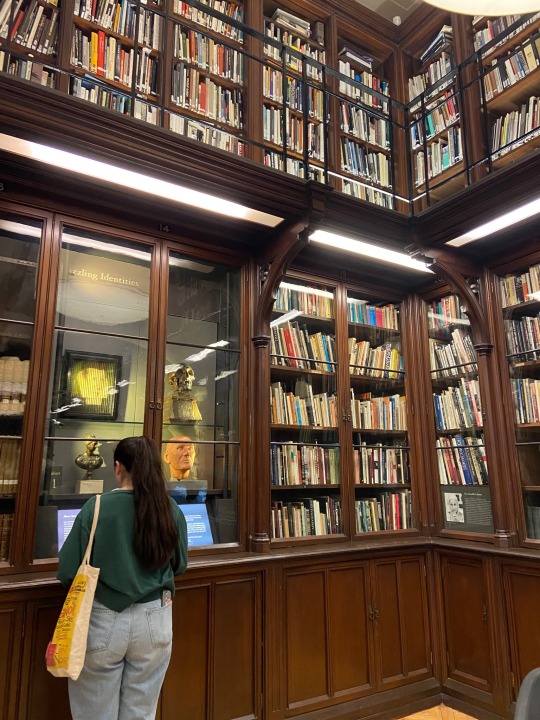

cried at culloden moor, ate apples off the tree in falkland, bought antique books in edinburgh
#studywithna#scotland#study#study inspiration#studyspo#studyblr#university#books#study abroad#dark academia
110 notes
·
View notes
Text
It's both funny and sad seeing online (and in this case anonymous) "journalists" scrambling to get a hold on who "redcoats" are in the wake of a recent inflated faux outrage about a café in Edinburgh. This article in particular is a wild one.
"The uniform was used by British soldiers from the 16th to 19th century in several conquests on behalf of the the British military around the world."
No, unless we're counting some niche Scottish and English retinues in the 16th c. it was used from the 1640s by the English and the 1660s by the Scottish (almost half a century before the Act of Union). Nor did the uniform stop being worn in the 19th century, it only ceased being battlefield dress - it's still ceremonially worn today (by Scottish regiments as well).
"For those unaware (take note, Edinburgh Castle), from 1725 onwards, garrisons manned by government soldiers or "redcoats" sprung up all over the Scottish Highlands, most notably at Fort William and Inverness."
I love the condescending tone of this part, with the anon author totally schooling Historical Environment Scotland for their lack of history knowledge. But no, garrisons didn't suddenly start appearing from 1725 onwards. Prior to 1745 Scotland was not an "occupied" country. The redcoats being talked about were mostly Scottish regiments holding the Scottish garrisons they'd occupied for decades (the basic problem with the premise of this article is people think "redcoat" = "English." Ironically for at least half of the historical timeframe the English were a minority of "redcoats").
"Redcoats took an aggressive hand to Scots across the country who did not support the king and attempted to cling to their national identity."
Which king? The exiled Stuart king? The "Hanoverian" king? This "national identity" stuff is also fabricated hokum, again, there was no effort at repression in Scotland by "redcoats" prior to the 1745 uprising, just the usual service performed by the 18th c. military. Scotland had one of the lowest ratios of soldiers-to-population in Europe during the period! These soldiers were almost all Scottish themselves. The author is just writing what they vaguely think is the case as fact.
"The government army, clad in red, massacred Scots at the Battle of Culloden Moor, marking not only the defeat of the Jacobite movement, but the destruction of clan and Gaelic Highland life. From 1745, Highlanders were forbidden to carry weapons – including the famous broadsword. The playing of the bagpipes was banned. Tartan and highland dress was outlawed."
The clan structure was dying a death before Culloden and the battle didn't mark its final "destruction" (people seem to also think the redcoats were responsible for the Clearances, so at this stage anything's fair game). The bans on the things mentioned as outlawed were barely enforced and largely repealed within a few decades.
"And clansmen who dared to defy? Fines, imprisonment, exile, and death at the hands of... you guessed it, the redcoats. However, as one user wrote, "history is complex", highlighting that Scots wearing redcoats were on the side of the British army on the moor."
They finally managed to mention that "redcoats" aren't just the English. In fact most of the "fines, imprisonment, exile and death" being meted out was by fellow Scots against the Jacobites, who didn't have the support of the majority of the country. And this wasn't just a lowlanders vs highlanders thing, highlanders were behind repressing *other* highlanders, as has been the case throughout history.
The best part of all this is the café has been operating under that name for 32 years without comment, but they've only just noticed so now it's become a thing.
tl;dr

33 notes
·
View notes
Text
He's calmed down a little
since Culloden Moor

Season 2 vs. Season 7
💔
[May 10, 2023]
90 notes
·
View notes
Text
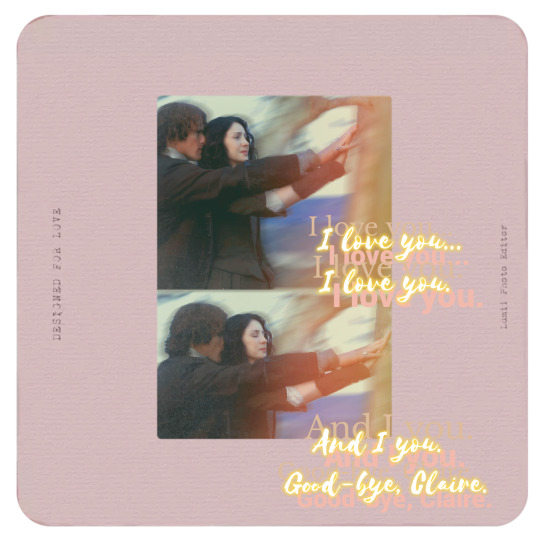
You can't know that. It's much too soon. It... Oh, Sassenach, you have not been a day late in your courses in... in all the time since ye first took me to yer bed, but it's been two months now. You kept track? In the middle of this bloody war, you kept track? Aye. How long have you known? Not long. This child... this one is all that will be left of me... ever. But now, we must go, so I beg you, Claire... You heard me give my word to Rupert, and you made me a promise to spare Randall's life. You... you promised me that if it came to this, ye'd go back through the stones, back home.
But you are my home.
And you are mine, but this home is lost. And now you and the bairn... you must go to a safe place. To a man... A man that could care for you both. No. No, I... Claire. Claire, there's no time.
How will I explain all this? How can I go back? To Frank. All that I leave to you. Tell him what you will about me... About us. It's likely he'll no want to hear, but if he does... Tell him I'm grateful. And tell him I trust him, and tell him I hate him to the very marrow of his bones. The buzzing. It's so loud. I'm not ready, Jamie. I'm not ready. Come with me. Come with me through the stones. Na, I can't. You could try. You hear it, right? The buzzing? I don't hear anything, Claire. Even if I could... go back through the stones...
It's not my place. My destiny lies on Culloden Moor.
But I'll find you. I promise. If I have to endure 200 years of purgatory... 200 years without you, then that is my punishment that I have earned for my crimes, for I have lied, killed, stolen, betrayed... And broken trust. But when I stand before God, I'll have one thing to say to weigh against all the rest.
Lord... you gave me a rare woman... And God, I loved her well.
It has begun. Our wedding gift from Hugh Munro. You keep it with you.
Blood of my blood. And bone of my bone. As long as we both shall live.
Come on. This... belonged to my father. Give it to the bairn, when he's old enough. I will name him Brian, after your father.
I love you. I love you. And I you. Good-bye, Claire.
Outlander 2×13 “Dragonfly in Amber”💔
#outlander#outlanderedit#the frasers#outlander starz#outlander series#jamie fraser#outlander fanart#samheughan#jamie&claire#jamie and claire#caitrionabalfe#claire fraser#claire beauchamp#dr claire randall#outlander books#outlander 2x13#outlander season 2
17 notes
·
View notes
Text
Sounds of Culloden
It's Sunday again. We all think Bear McCreary's music reigns supreme, and it does. But the Highlanders sang this at Culloden Moor, waiting for that dreadful day of doom:
youtube
“D’ye know why they called him ‘Prince Charlie’?” Roger asked. “English people always think it was a nickname, showing how much his men loved him.”
“It wasn’t?”
Roger shook his head. “No, indeed. His men called him Prince Tcharlach”—he spelled it carefully—“which is the Gaelic for Charles. Tcharlach mac Seamus, ‘Charles, son of James.’ Very formal and respectful indeed. It’s only that Tcharlach in Gaelic sounds the hell of a lot like ‘Charlie’ in English.”
Brianna grinned. “So he never was ‘Bonnie Prince Charlie’?”
“Not then.” Roger shrugged. “Now he is, of course. One of those little historical mistakes that get passed on for fact. There are a lot of them.”
“And you a historian!” Brianna said, teasing.
Roger smiled wryly. “That’s how I know.” (Diana Gabaldon, Dragonfly in Amber)
42 notes
·
View notes
Text
Hear me out: Bucky Barnes is 100% not Jewish.
I’ve been doing a lot of scrolling on Tumblr/Ao3 the past few days looking for other people’s opinions on the nitty gritty of Bucky Barnes’ background, and realized- a lot (a *lot*) of people headcanon him as Jewish, which I find really interesting. Judaism, on the whole, is an extremely interesting subject, as the only non-universalizing Abrahamic faith, the only ethnic Abrahamic faith, and the oldest Abrahamic faith (making it one of the oldest monotheistic religions ever to exist).
Let me present to you my speculation on Bucky’s religious background. First of all, we know Steve is Catholic. Just getting that out of the way.
Am I a geography and demography nerd? Yes, yes I am. And I also have a strange hyperfixation on names. That’s why this stood out to me immediately.
James Buchanan Barnes, born March 10, 1917, into a poor family in Brooklyn, New York.
James is a really ambiguous name, with versions in pretty much every Indo-European language, as far as I know. It’s the number one baby boy name in the United States of all time, beating out the second place name (Robert) by over 300,000. Honestly, this name tells me nothing. Moving on.
Buchanan. It’s Scottish. That says a lot. It was fairly common at the time for the eldest sons middle name to be the mothers maiden name, so we can safely say that Winnifred Barnes (née Buchanan) was most likely Scottish.
Now, this is where we get historical, and also where speculation starts. As many Outlander fans will know, things went south for Catholics in Scotland after the battle of Culloden Moor and the Jacobite rebellion, however… The Roman Catholic ecclesiastical hierarchy was reestablished in Scotland in 1878. Catholic emancipation occurred in 1829, and there was a revival of Papism in Scotland, along with an influx of Irish Catholic immigrants coming in (especially with the potato famine starting in the 1840s in Ireland), so, while Catholicism isn’t as popular in Scotland today (approximately 15% of modern Scots are Catholic), when Winnie was born (likely somewhere between 1897 and 1900, I usually put it at 1899) there would have been a good number of Catholics in Scotland. There’s a really good chance she was Catholic.
Now. Barnes. If there was ever an extremely English surname, it was Barnes. It’s pretty hard to provide reasonable evidence that George Barnes was not English, so, let’s run with that. While England today has high percentages of Islam, Hinduism, and even reasonable amounts of Sikhism and Buddhism, it was… very Christian back in the day. In fact, the only really established non-Christian religion in England was Judaism (England contained approximately 60000 Jews in 1880, a number which rose to 300000 by 1914. However, please consider that the majority of these people were fresh immigrants escaping anti-semitism in Eastern and Northern Europe, who would not have had the surname ‘Barnes’). Delving further into English Christianity- they were Anglican, pretty much.
Guess what? Protestants (ex. Anglicans like George) and Catholics (like Winnie) don’t like each other. While marriage between Protestants and Catholics wasn’t illegal in the uk at the time, it is extremely unlikely their families would have approved. So, Winnie and George moved to NYC. (Actually, this is how my very own great-great-grandparents ended up in New Zealand).
So, where does James Buchanan Barnes lie on the religion side of things? I can tell you The chances that he’s Jewish are very low. I’d say he’s probably Catholic, even if just to blend in- New York is extremely Catholic, even today. He could be Anglican. After all the shit Hydra put him through, he’s might’ve given up on religion all together. Or maybe he converted to Buddhism. A lot of people do that (Buddhism is the third largest universalizing religion on earth). I’m kidding, don’t take that seriously, he’s not a Buddhist.
I think he’s Catholic.
But hey, nothings concrete. I’ve read some really great stories where he’s Jewish. I’ve read great stories where he’s Catholic.
-Ranger616
#bucky barnes#steve rogers#captain america#winter soldier#the avengers#george barnes#winnifred barnes#religon#marvel#marvel cinematic universe#judaism#christianity#catholiscism#protestantism#anglicanism
14 notes
·
View notes
Text
I'm not usually one for doing these, but this idea from @marauderswolf22 is pretty cool and I want in on talking about the shit I like.
3 (or another number, but three is always good) songs that bring back fond memories or feelings, or that just make your day better (I will also be including my favorite lyric(s) from each):
1. Inkpot Gods by The Amazing Devil — My favorite song by them, and they have really good songs. The whole thing sounds defiant and bittersweet and hopeful. These aren't tears, just rain that wasn't brave enough to fall. That's not the dark, it's the gods upturning their inkpots because even they are afraid of what your existence means to them.
If I don't make it back from where I've gone
Just know I loved you all along.
2. Stars from Les Misérables — This is the song that explains the antagonist, Javert's, motivation and worldview more than any other (and he has just revealed that he was born in a jail. From the gutter, just like our protagonist Jean Valjean.). He addresses the stars, always standing in their rightful places in the sky and never faltering from their course and aim. He is on the side of justice and the law. Valjean is not. The morality is clear. And he will not stop until he has done what he must.
You know your place in the sky
You hold your course and your aim
And each, in your season,
Returns and returns
And is always the same.
And if you fall as Lucifer fell
You fall in flames!
3. I Wanna Be In The Cavalry / I Wanna Be In The Cavalry: Reprise
Two songs. The first reflects the hopeful, optimistic, excited nature of a young cavalry soldier as he sings of the striking image he'll leave, his shining saber, carbine, and Remington, and how he wants to have a good horse like his forefathers. The song ends with him acknowledging that he won't make it back.
The reprise is from a soldier far wiser and far more scarred. He sings of their initial faith in their orders despite being outgunned and not standing a chance. He sings of the horses that have died under him, of the excitement and celebration as he and his comrades left their hometown, only to have that hope fade as their uniforms wore through, frostbite set in, and disease spread. And of the hopes all lying dead and broken after what they had done and gone through.
With morale in doubt and our pride run out no honour did I see
All I seen were a thousand dreams piled dead in front of me.
4. The Summer of '46 by Robin Laing
The Battle of Culloden, on April 16th 1746, marked the end of the highland culture. As retaliation they faced a genocide of their culture, with tartan and kilts banned on pain of prison and transportation to a British colony for years. It was only in 1782, 26 years later, that this ended. Still, what had once been was dead.
The Summer of '46 tells the story of what happened following that battle on Drumossie Moor through the eyes of a man on the run with Bonnie Prince Charlie, the leader of the Jacobite Rising that had threatened the British, as they find themselves on the run in the Highlands.
Some men are most attracted to the cause that can't be won
Life has many flickering ghosts to make us hide and run.
5. Those You've Known from Spring Awakening
A beautiful song about staying alive and remembering the loved ones who have gone, sharing their stories.
Those you've known
And lost still walk behind you
All alone
They linger till they find you
Without them
The world grows dark around you
And nothing is the same
Until you know that they have found you.
If they're up to it, I'd love to see what others have for this. Don't feel obligated, though! @magiclynx @eyrie-of-synapses @emotional-support-werewolf
4 notes
·
View notes
Text
April 16th 1745 we pray for all of the jacobites who died at Culloden Moore
4 notes
·
View notes